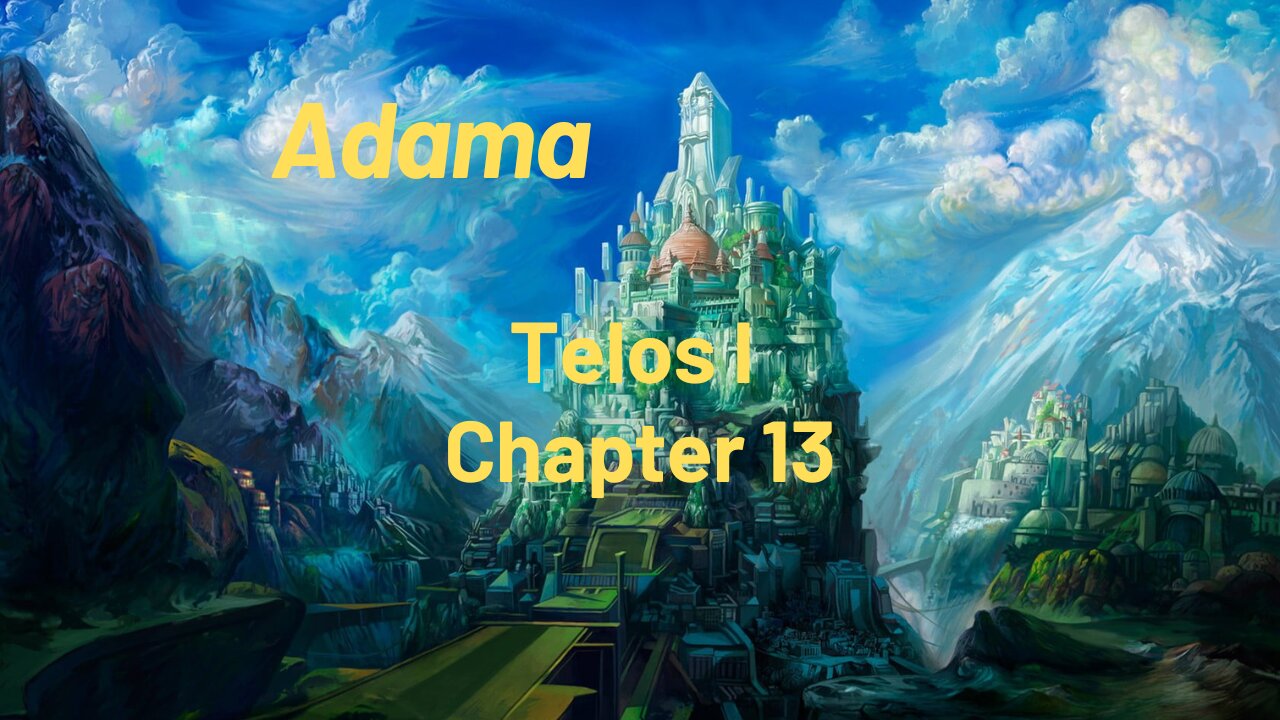Premium Only Content

Adama - Telos I - Chapter 13
Chapter 13 of the book "One from Telos," authored by Adama, delves into a topic that may be challenging for some to accept, yet is considered a crucial point in one's evolutionary journey: pain and suffering. Adama addresses the question of why pain and suffering exist and how they are interconnected with the Law of Action and Reaction, a universal law that states that every energy exerted will have an opposing energy of the same intensity acting in return.
The chapter emphasizes that directing negative energy towards something or someone results in its eventual return, in alignment with this law. While the concept of consequences may not equate to punishments in the same sense as understood on Earth, they are seen as lessons to be learned and understood. Much of the pain and suffering experienced in the present stems from actions in the current lifetime and from past lives, emphasizing the karmic nature of these experiences.
An analogy is drawn to how individuals often revisit and replay their pain and suffering, inadvertently intensifying these emotions. The act of focusing on these negative feelings adds energy to them, either positively or negatively. Positive feelings contribute to growth, while low-vibration emotions such as pain and suffering need healing and modification. Adama stresses that pain and suffering hold lessons to be comprehended, and healing occurs once these lessons are understood.
A central theme of the chapter is the notion that spreading one's pain and suffering to others is counterproductive. Sharing these emotions can lead to the amplification of suffering both in the individual and the recipients of the shared feelings. Pity, a low-vibration emotion, can exacerbate suffering when it is shared with others. Adama questions the motivation behind such sharing and urges individuals to seek healing from within, emphasizing that genuine help comes from the heart.
The chapter emphasizes the importance of introspection and self-responsibility in healing. Adama suggests that individuals keep their pain and suffering to themselves, focusing on inner healing rather than burdening others with their negative emotions. True healing, it is explained, arises from within and involves changing one's thought patterns, actions, and spoken words. The process of evolution is depicted as a means of cleansing accumulated energies over time, leading to inner and outer healing.
The narrative cautions against blaming external forces, such as Father/Mother God, for individual suffering. Instead, it emphasizes that individuals are responsible for the energies they generate and the resulting experiences. The concept of forgiveness is highlighted, extending it to oneself and one's soul for past mistakes. A plea is made to avoid judging one's soul and to embrace self-forgiveness, an essential step in the journey of evolution.
Adama introduces the Temple of Jade Healing in Telos, a place where individuals can seek assistance for emotional, mental, physical, and spiritual healing. The temple is portrayed as a haven for those seeking genuine healing, provided they approach with an open heart and sincere intention. The chapter concludes by emphasizing the importance of surrender, belief, and genuine desire for healing in embarking on a transformative journey towards inner and outer well-being.
-
 DVR
DVR
Nerdrotic
3 hours agoA Very Merry Christmas | FNT Square Up - Nerdrotic Nooner 453
3.95K2 -
 1:14:05
1:14:05
Tucker Carlson
3 hours ago“I’ll Win With or Without You,” Teamsters Union President Reveals Kamala Harris’s Famous Last Words
71K181 -
 1:58:31
1:58:31
The Dilley Show
3 hours agoTrump Conquering Western Hemisphere? w/Author Brenden Dilley 12/23/2024
59.7K7 -
 1:09:59
1:09:59
Geeks + Gamers
4 hours agoSonic 3 DESTROYS Mufasa And Disney, Naughty Dog Actress SLAMS Gamers Over Intergalactic
32.7K7 -
 51:59
51:59
The Dan Bongino Show
5 hours agoDemocrat Donor Admits The Scary Truth (Ep. 2393) - 12/23/2024
569K1.5K -
 2:32:15
2:32:15
Matt Kohrs
16 hours agoRumble CEO Chris Pavlovski Talks $775M Tether Partnership || The MK Show
90.7K26 -
 28:23
28:23
Dave Portnoy
16 hours agoDavey Day Trader Presented by Kraken - December 23, 2024
112K32 -
 59:29
59:29
BonginoReport
7 hours agoTrump, Murder Plots, and the Christmas Miracle: Evita + Jack Posobiec (Ep.110) - 12/23/2024
126K99 -
 2:59:14
2:59:14
Wendy Bell Radio
9 hours agoNothing To See Here
97.4K59 -
 2:12:18
2:12:18
TheDozenPodcast
1 day agoIslam vs Christianity: Bob of Speakers' Corner
99.8K24